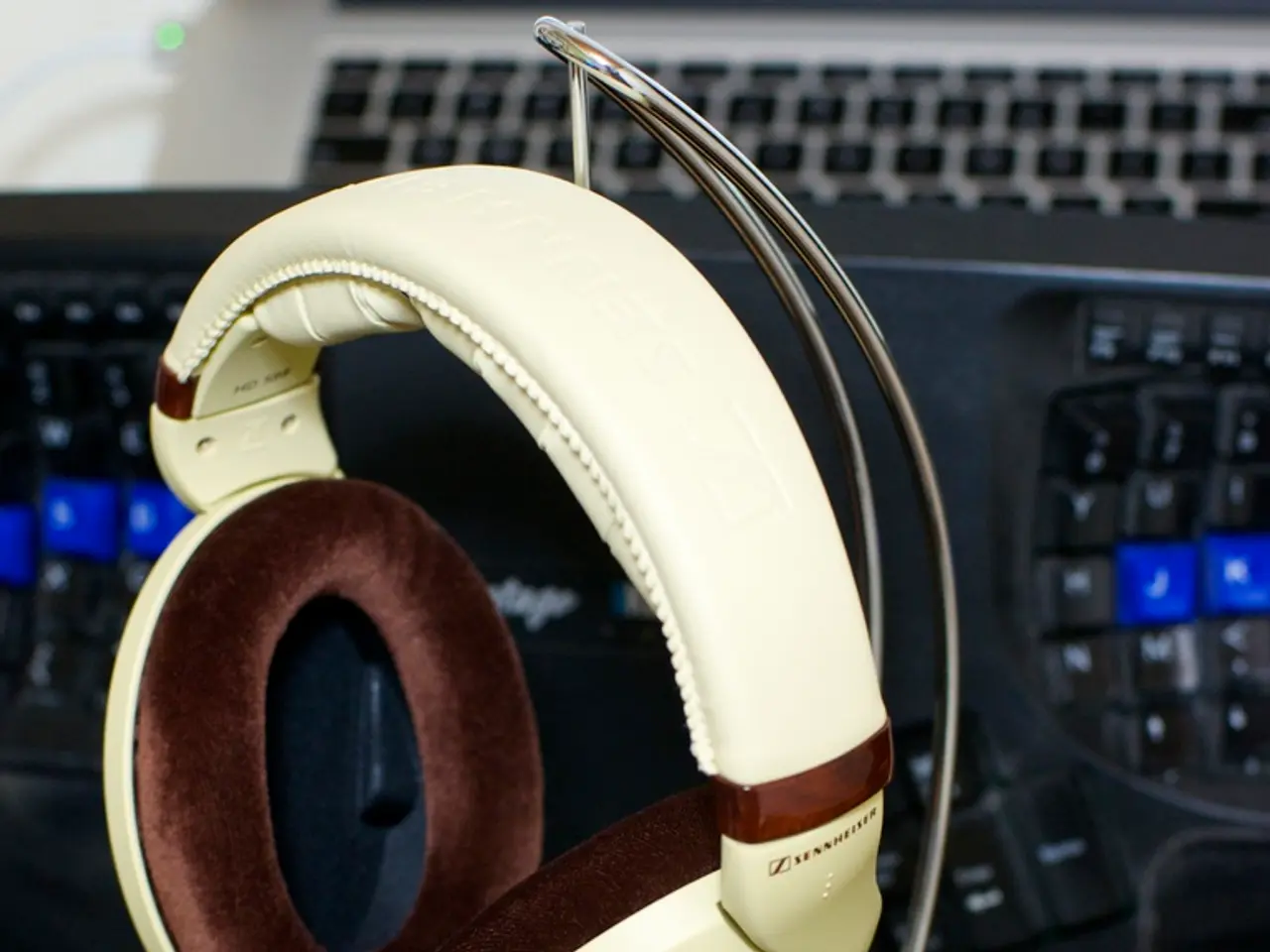Dissecting the Distinction: Preamplifier vs Amplifier Amplification Explained
In the realm of audio equipment, two essential components play a crucial role in delivering high-quality sound: preamplifiers and amplifiers. These devices, while serving different functions, work together to create an immersive listening experience.
Positioned between the source device (such as a turntable, microphone, or CD player) and the power amplifier, the primary job of a preamplifier (preamp) is to boost weak audio signals, like those from microphones or phono cartridges, to standard "line level" - the voltage standard used by most audio equipment [1][3]. It also serves as the control hub, managing input selection, volume, and sometimes tone controls [3].
On the other hand, the amplifier takes the line-level signal and increases both its voltage and current to a level sufficient to drive speakers or headphones, converting electrical energy into mechanical motion (sound) [1][5]. It is situated after the preamp, before the speakers. The amplifier's sole purpose is to deliver power, not to manage sources or attenuate signals.
Preamplifiers focus on signal conditioning, boosting low-level signals, ensuring minimal noise and distortion, and providing user controls for source selection and volume [1][3]. High-quality preamps enhance clarity and preserve the integrity of the audio signal before it reaches the amplifier [4]. In contrast, amplifiers are dedicated to power delivery, with the quality of the amplifier affecting how accurately and powerfully the audio is reproduced, but it does not influence source selection or signal routing.
Engineers can optimize preamps for ultra-low noise and minimal interference, as they do not need to handle high power. This allows the use of high-grade components and simplified circuit layouts to maximize signal purity [4]. Amplifiers, however, require robust power supplies, large transformers, and heat management, prioritizing power efficiency and the ability to drive demanding speaker loads [4][5].
When setting up an audio system, selecting the right preamplifier and amplifier is essential for optimal performance. Factors to consider include the type of audio sources, the type of speakers, and compatibility between the two components. Integrated solutions, combining preamp and power amp functions in one unit, offer simplicity, while separates (dedicated preamp and power amp) are often preferred in high-end systems for superior performance and flexibility [4].
In summary, preamplifiers condition and control audio signals at the system’s input, while amplifiers provide the muscle to drive speakers - each excelling in its specialized role for optimal sound reproduction [1][3][4]. When setting up an audio system, it's essential to understand these differences to achieve the best possible sound quality.
[1] What Is a Preamplifier? (Preamp) - Definition from Audio Pro (https://www.audiopro.com/what-is-a-preamplifier-preamp-definition/) [2] What Is a Power Amplifier? - Definition from Audio Pro (https://www.audiopro.com/what-is-a-power-amplifier/) [3] Preamplifier vs Amplifier: What's the Difference? - Audio Advice (https://www.audioadvice.com/learn/articles/preamplifier-vs-amplifier-whats-the-difference/) [4] Preamplifiers and Power Amplifiers: A Guide - The Absolute Sound (https://www.theabsolutesound.com/articles/preamplifiers-and-power-amplifiers-a-guide/) [5] What Is an Amplifier? (Power Amp) - Definition from Audio Pro (https://www.audiopro.com/what-is-an-amplifier-power-amp-definition/)
Investing in a home theater system necessitates giving consideration to one's choice of gadgets, particularly the preamplifier and amplifier, as these tech devices play vital roles in enhancing sound quality by managing source selection, boosting weak signals, and powering speakers effectively. High-grade preamplifiers [1][3] contribute to clarity and audio signal integrity, while amplifiers are instrumental in power delivery to ensure accurate and powerful audio reproduction [5].




